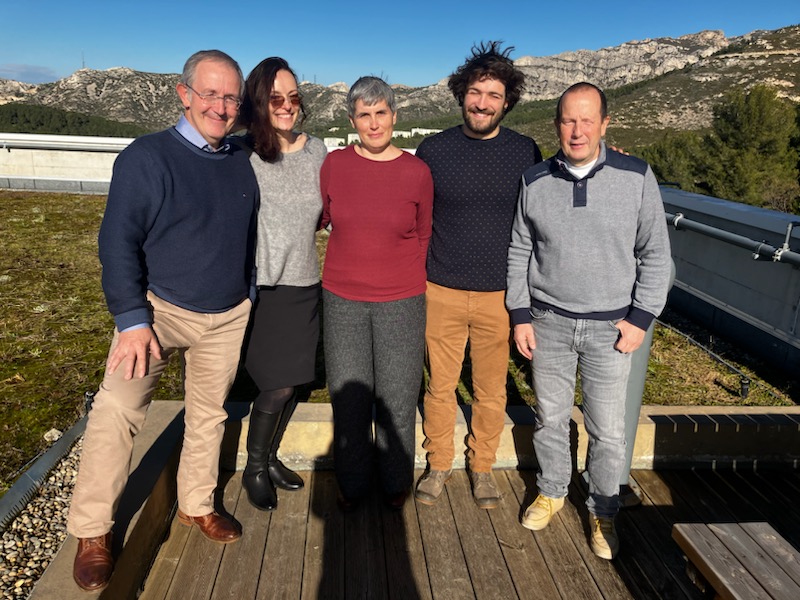On the subject entitled: "Variability of zooplankton in the Bay of Marseille over the last two decades“.
Jury :
- Lidia Yebra (IEO-CSIC, Spain), Research Director, Rapporteur;
- Priscilla Licandro (Stazione zoologica Anton Dohrn, Italy), Research Fellow, rapporteur;
- Jean-Baptiste Romagnan (IFREMER, France), Research Fellow, examiner;
- Jean-Louis Jamet (UTLN-MIO, France), Professor, Chairman of the jury;
- François Carlotti (CNRS-MIO), Research Director, Thesis co-supervisor;
- Daniela Bănaru (AMU-MIO), Associate Professor, thesis co-director.
Abstract :
In recent decades, the north-western coastal zones of the Mediterranean have undergone major changes: nutrient concentrations have fallen and water temperatures have risen. At the same time, the relative body condition of two species of planktivorous fish (sardine and anchovy) in the Gulf of Lion has deteriorated. It has been suggested that this change is due to bottom-up control via a change in the quantity and quality of zooplankton. This thesis presents the holistic multi-index analysis of time series from fortnightly zooplankton monitoring in the Bay of Marseille, east of the Gulf of Lion, over the last two decades (2005-2022). This analysis includes variations in the biomass, species structure, size structure, energy content, elemental composition and isotopic composition of the zooplankton community. In Marseilles Bay, zooplankton time series show strong seasonal and interannual variations for all the indices studied. The close link between quantitative and qualitative variations within the zooplankton and the environmental oligotrophication gradient suggests that bottom-up control is predominantly at work within the planktonic community. During the periods with the greatest amount of nutrients (winter-spring, and the beginning of the time series), the zooplankton community was largely dominated by descopods (herbivores, omnivores). At the community level, this translates into higher biomass and abundance, while sizes and diversity are lower. During periods with lower nutrient levels (summer-autumn, and at the end of the series), the dominance of herbivorous and omnivorous copepods is reduced and large filter-feeding organisms (e.g. pteropods) and predators (e.g. chaetognaths, but also carnivorous copepods) appear. At the community level, this translates into lower biomass and abundance, while size and diversity are higher. Analyses of the biochemistry and isotopic tracers of the 300-500 μm size class used as a reference for zooplankton have shown changes in the biochemical, elemental and isotopic composition of zooplankton since 2009, with a decrease in lipids, an increase in proteins and increases in the stable isotope ratios of nitrogen and carbon. These changes are consistent with an increase in the oligotrophy of the environment. Analyses of biochemical content and isotope ratios, carried out for a number of contrasting years, on all zooplankton size classes (from 200 to >2000 μm) confirmed the decrease in lipid concentration in all classes. The values of many indices changed drastically during the 2010s, in line with comparable phenomena observed in other Mediterranean series. However, interannual variations in the biomass of the 1000-2000 μm size class, lipid and protein concentrations, and isotope ratios were observed earlier (from 2008), coinciding with the crisis period for small pelagic fish. These results therefore provide some insight into the potential effect of changes in zooplankton on the reduction in size and body condition of small plankton-eating fish in the Gulf of Lion. This critical period in the zooplankton in the Bay of Marseille would have gone unnoticed without the joint analysis of the specific, quantitative and qualitative composition of the zooplankton. This thesis demonstrates the value of applying several complementary indices to characterise zooplankton dynamics in long-term monitoring.
Key words :
Zooplankton, North-western Mediterranean, Time series, Environmental change, Ecological tipping points





